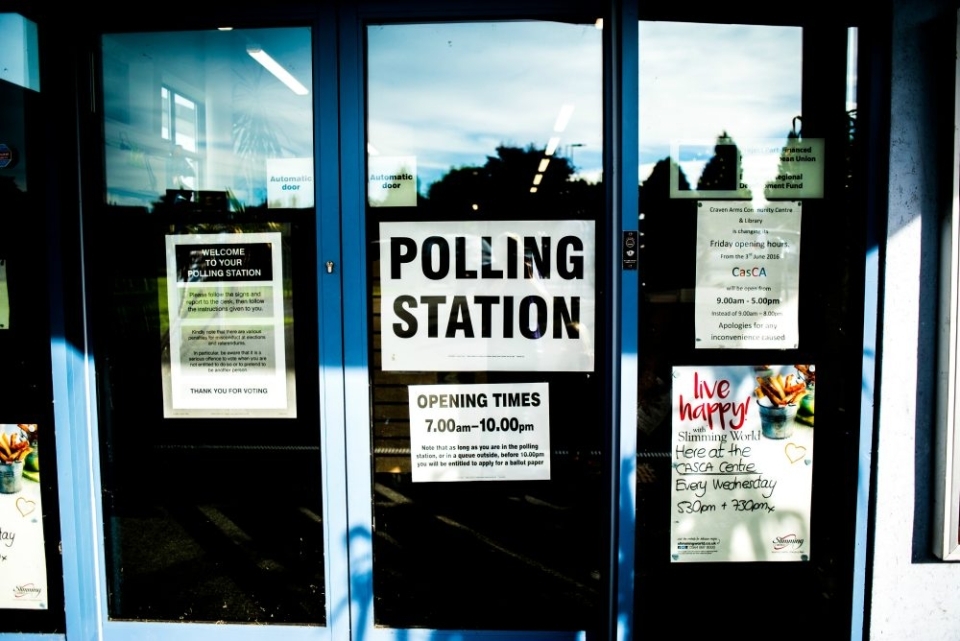The last few weeks have rocked the environmental movement. In the wake of the November elections, environmentalists are deeply concerned about the future of the Paris climate accord, the rollback of federal environmental protections, and even the fate of the U.S. Environmental Protection Agency itself.
But one of the environmental movement's biggest problems is the same now as it was on November 7: Environmentalists aren't voting.
Approximately 20.1 million environmentalists are registered to vote, according to Environmental Voter Project research. But in the 2014 mid-term elections, only 4.2 million of them voted, and in the 2012 presidential election barely 10 million of them voted. In Massachusetts, 277,250 environmentalists skipped our 2014 gubernatorial election, which was decided by only 40,000 votes.
While we don't yet know how many environmentalists voted on November 8 (public voter files won't be updated until February), early data reveal that America's overall turnout problem has only gotten worse.
Most pundits' election postmortems have dismissed turnout problems, since raw voter turnout increased from 129 million in 2012 to 137 million in 2016. Yet, these numbers ignore a crucially important consideration: Over that same time period, the total number of registered voters skyrocketed from 153 million to 200 million. While raw voter turnout increased by 6 percent since 2012, the overall pool of registered voters increased by 31 percent.
Put another way, turnout as a percentage of overall registered voters plummeted from 84 percent to 68 percent.
Some of this decrease can be attributed to positive developments, such as record-setting voter registration efforts and fewer restrictions on registration in some states. Nevertheless, the growth in voter rolls can't solely be blamed for the steep slide in turnout rates. Millions of long-registered voters likely stayed home on Election Day, which is particularly bad news for the environmental movement, because we tend to be poor voters.
Regardless of party affiliation, environmentalists need to address their turnout problem. We need to start voting for one simple reason: Politicians want to win elections. To do that, they focus on issues of importance to voters, not non-voters.
Right now, voters do not prioritize environmental issues. When we polled likely voters this summer, only 4 percent listed climate change and the environment as a top-2 issue, placing it 15 out of the 19 issues in our survey.

No matter who wins an election - whether they're an environmentalist, a Democrat or a Republican - we can't expect environmental leadership when so few voters demand it.
Still there's an opportunity hidden in these statistics. Although voters don't prioritize environmental issues, non-voters do. Large majorities of Americans support government action to address climate change and protect the environment. Furthermore, committed environmentalists already go to great lengths to act on their beliefs: They diligently recycle, they bike to work, and they install solar panels on their roofs, all of which require much more time and effort than voting.
In short, millions of Americans are already fully persuaded environmentalists; now we just need to change our habits and start voting. Fortunately, changing people's habits is much easier than changing their minds.
While Big Data and predictive analytics help us accurately identify these environmental non-voters, we can get them to vote with a high-tech version of a tactic we learned in middle school: peer pressure. Recent behavioral science research shows that social pressure is far more effective at getting people to vote than talking about a particular candidate or issue. People will vote if you show them that their friends and neighbors are voting, and we now have the data, voter files and messaging tools to do just that.
There's an old adage that policy is not made on Election Day, it's made in the time between election days. Politicians are already fielding new polls to determine their legislative priorities for 2017 and 2018, but their pollsters only survey voters, which means that most environmentalists won't be heard until we start voting.
Whom you vote for is secret, but how often you vote is a public record. Rolls of active voters are the lifeblood of campaign strategy. Simply by voting, environmentalists can appear on a campaign's radar and become the focus of all polling, messaging and spending. Despite adages that disparage the impact of a single vote, the individual voter is a more potent political force than ever before.
With politicians already focusing on the next election, the challenge to the environmental movement is to identify our non-voting environmentalists and mobilize them to do just one thing on one day: vote.
Editor's Note: This column was adapted from the Distinguished Alumni Research Award lecture the author delivered at Boston College.
